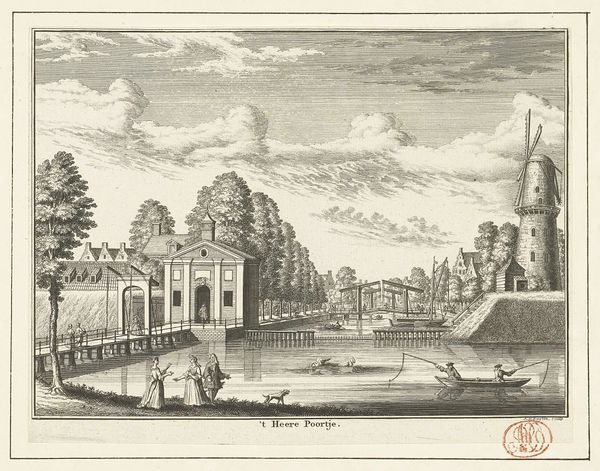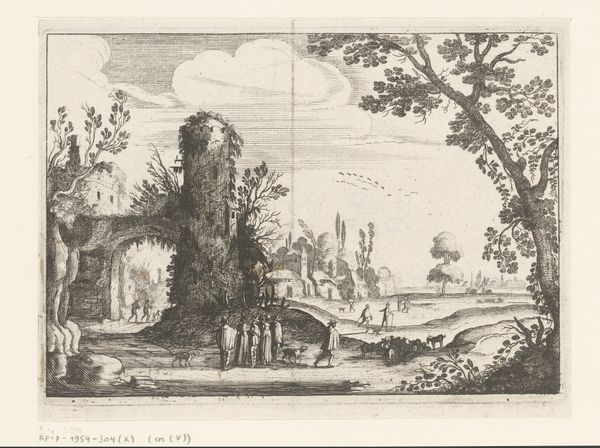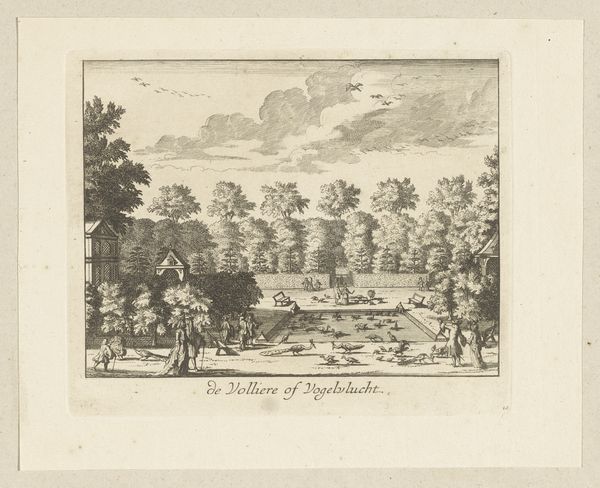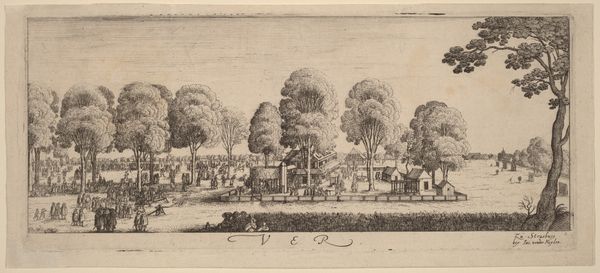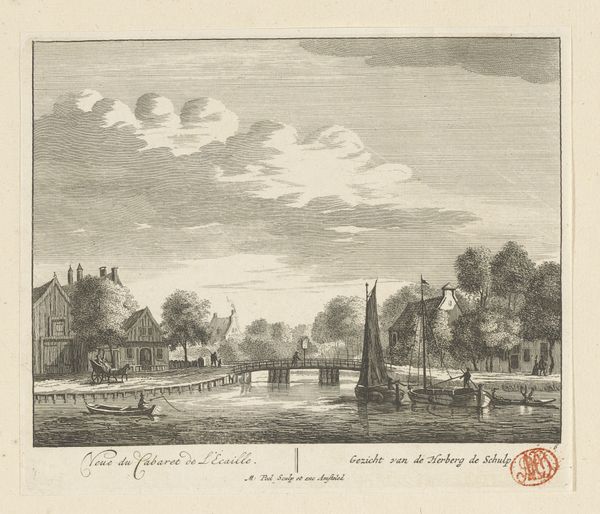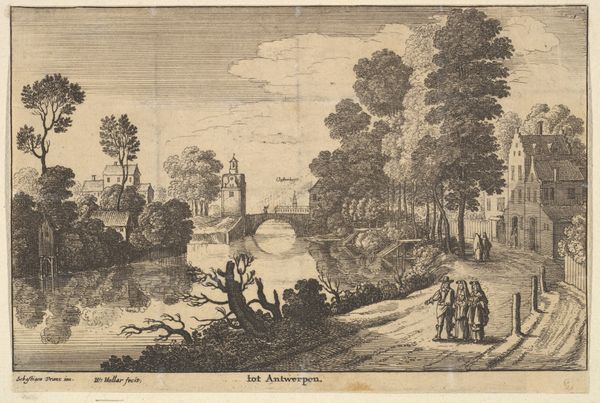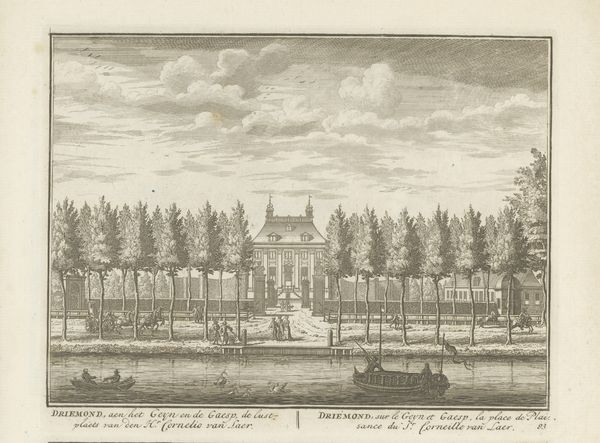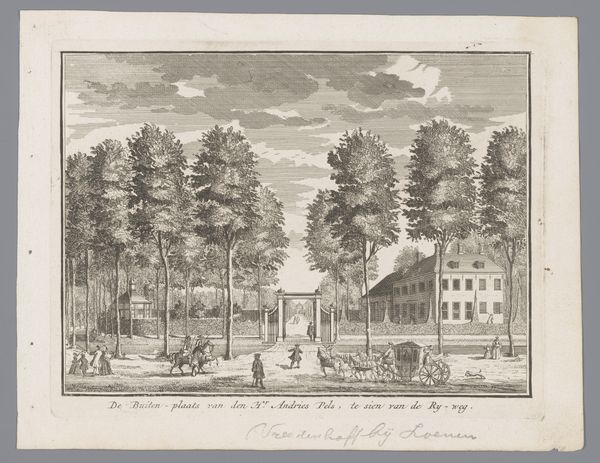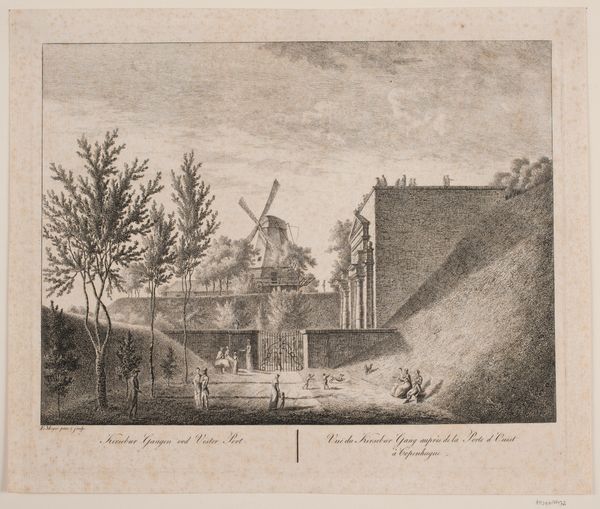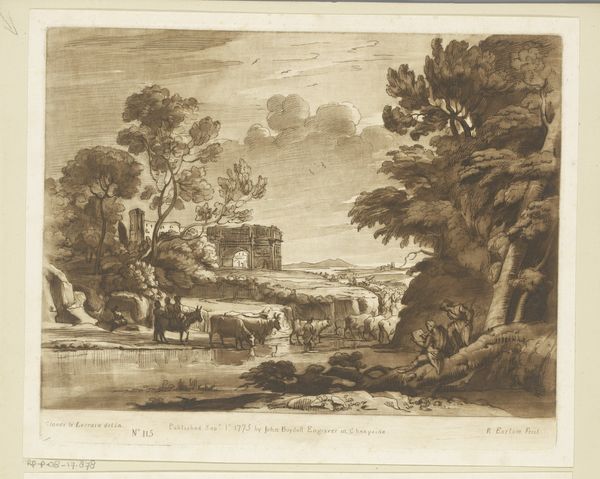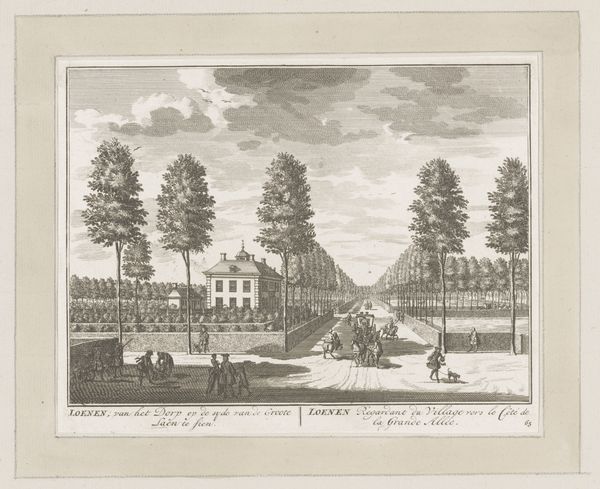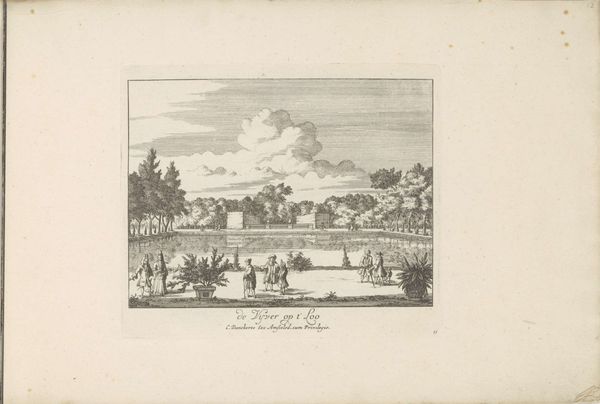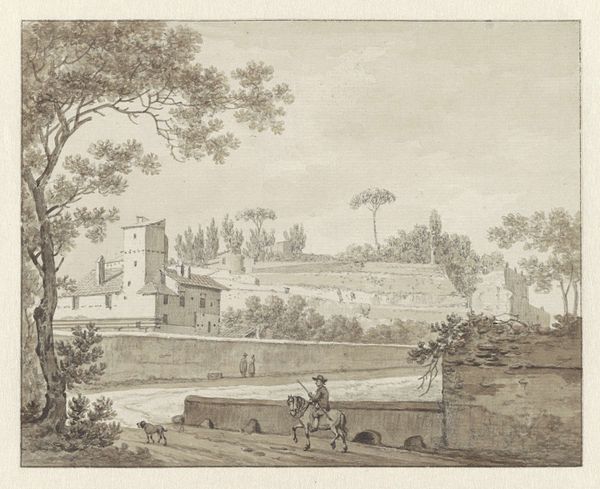
print, engraving
#
dutch-golden-age
# print
#
landscape
#
cityscape
#
engraving
Dimensions: height 164 mm, width 199 mm
Copyright: Rijks Museum: Open Domain
Abraham Rademaker made this print of the Herenpoort in Leiden, Netherlands, in the early 18th century. The gate itself, centered in the image, gives way to a world of leisure. The image emphasizes the gate's function as a site of social passage. Its purpose was to regulate movement and trade but it also marked a transition between different social spheres. Here, the cultural references emphasize order and prosperity, reflecting the values of the Dutch Golden Age. However, the inclusion of working figures, such as the fisherman, suggests Rademaker's awareness of the labor that underpins this affluent society. The windmill in the background is a nod to industrial activity. By examining period maps, municipal records, and trade statistics, we can understand how such images reinforced ideas about civic identity. The historian’s role is to unpack the complex relationship between art, power, and social life.
Comments
No comments
Be the first to comment and join the conversation on the ultimate creative platform.
